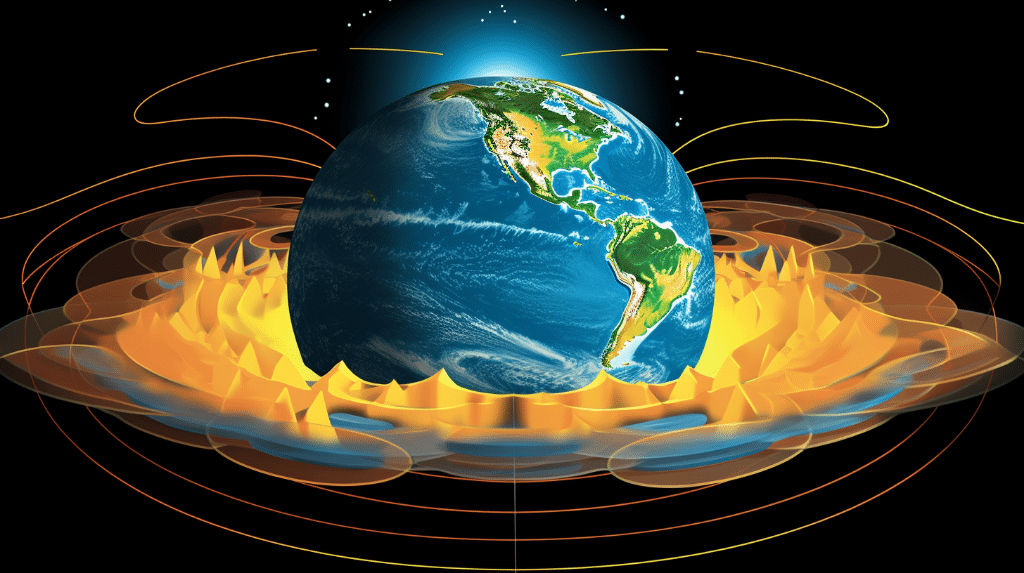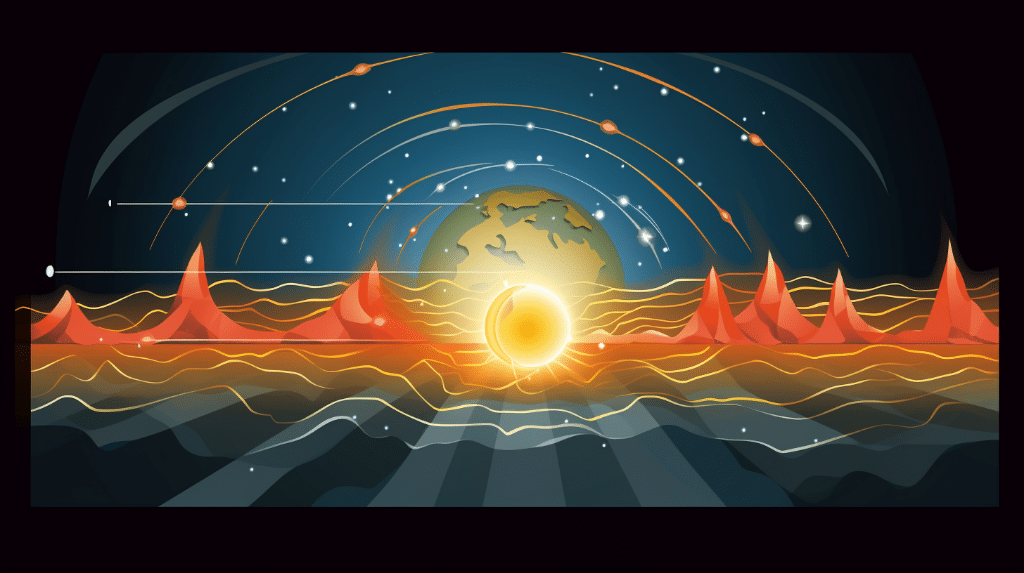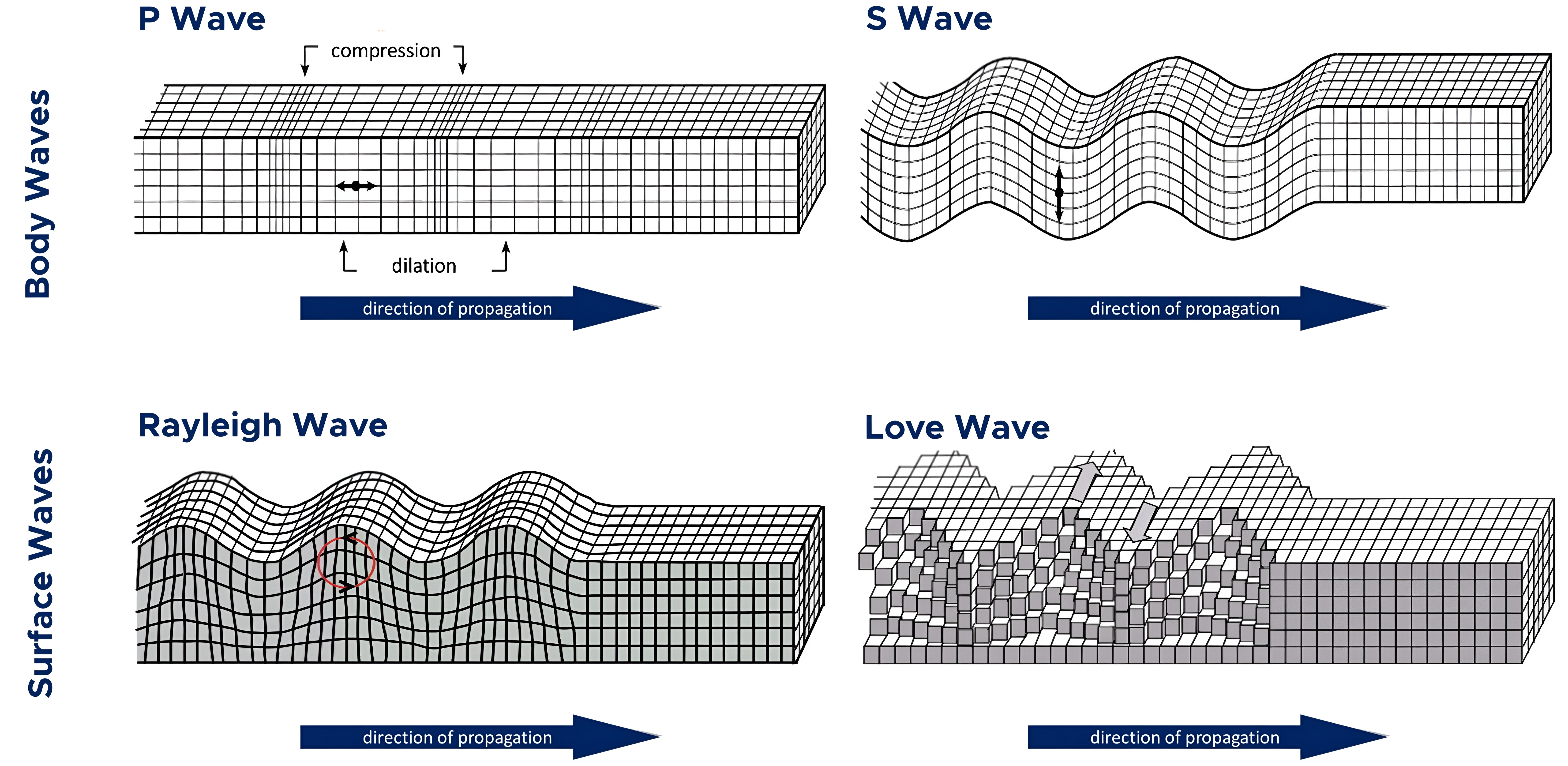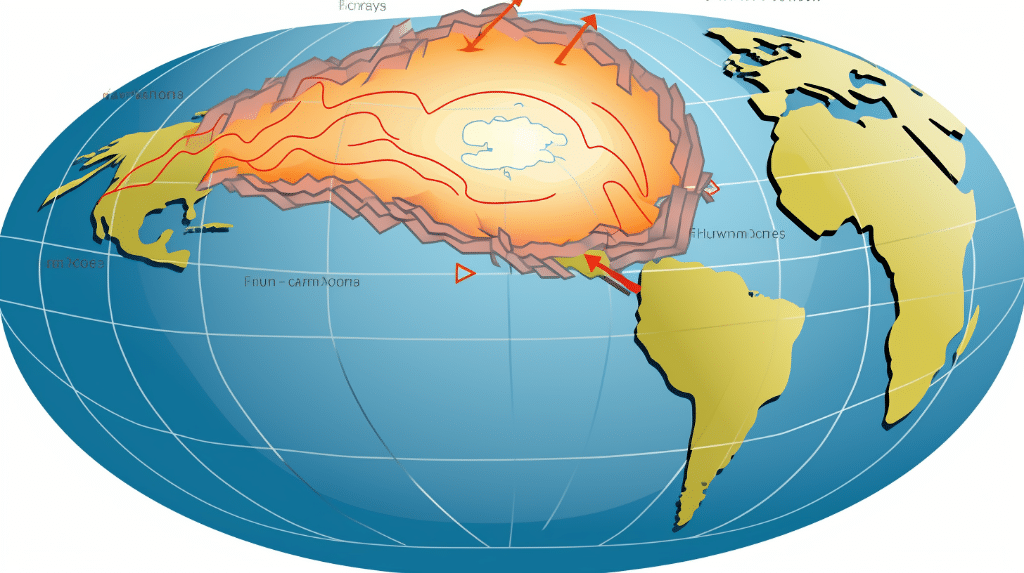Seismic waves, also known as earthquake waves, are vibrations that travel through the Earth’s crust as a result of an earthquake or other geological phenomena. These waves carry energy, which can be calculated to understand the magnitude and impact of an earthquake. In this blog post, we will explore how to calculate the energy of seismic waves, step by step, using formulas and examples. Let’s dive in!
How to Calculate the Energy of Seismic Waves

Calculating the Frequency of Seismic Waves
The frequency of a seismic wave refers to the number of cycles or vibrations it completes in a given unit of time. It is an essential parameter in the calculation of wave energy. The formula to calculate the frequency of a seismic wave is:
![]()
For example, if a seismic wave completes 10 cycles in 2 seconds, the frequency would be:
![]()
Determining the Speed of Seismic Waves
The speed of a seismic wave is the rate at which it propagates through the Earth’s crust. It is a crucial factor in energy calculation. The formula to determine the speed of a seismic wave is:
![]()
where the wavelength is the distance between two consecutive crests or troughs of the wave.
Procedure to Calculate the Energy of Seismic Waves
To calculate the energy of seismic waves, we need to know the amplitude and frequency of the wave, as well as the density of the medium through which the wave is traveling. The formula to calculate the energy of a seismic wave is:
![]()
where the density is the mass per unit volume of the medium, the amplitude is the maximum displacement of the wave from its equilibrium position, and the velocity is the speed at which the wave is propagating.
Worked out Examples on Seismic Waves Energy Calculation

Let’s work through a couple of examples to understand how to calculate the energy of seismic waves.
Example 1:
Given the following parameters:
– Frequency: 10 Hz
– Amplitude: 2 meters
– Density: 2000 kg/m^3
– Velocity: 500 m/s
Using the formula, we can calculate the energy of the seismic wave as follows:
![]()
![]()
![]()
Example 2:
Given the following parameters:
– Frequency: 5 Hz
– Amplitude: 3 meters
– Density: 2500 kg/m^3
– Velocity: 600 m/s
Using the formula, we can calculate the energy of the seismic wave as follows:
![]()
![]()
![]()
Application of Seismic Waves Energy Calculation in Geography
Role of Seismic Waves Energy in Earthquake Studies
The calculation of seismic wave energy plays a vital role in earthquake studies. It helps scientists and researchers understand the magnitude and destructive potential of earthquakes. By analyzing the energy released during an earthquake, they can assess the impact on structures, infrastructure, and human life, and devise strategies for mitigating the damage caused by future earthquakes.
Seismic Waves Energy and Earth’s Core Structure

The study of seismic wave energy also provides valuable insights into the structure of the Earth’s core. Different types of seismic waves, such as P-waves and S-waves, travel at different speeds and have varying energy levels. By analyzing the energy distribution and propagation patterns of these waves, scientists can infer the composition and characteristics of the Earth’s core.
Practical Examples of Seismic Waves Energy Application in Geography
Seismic wave energy calculation finds practical applications in various fields of geography. It helps geologists locate and understand the distribution of natural resources such as oil, gas, and minerals. By analyzing the energy spectra of seismic waves, they can identify underground structures and geological formations that may contain valuable resources.
Additionally, seismic wave energy calculation is used in the field of seismology to monitor and predict volcanic eruptions. By measuring the energy released by volcanic tremors and analyzing the corresponding seismic waves, scientists can assess the volcanic activity and issue timely warnings to mitigate the potential risks to nearby communities.
Numerical Problems on How to Calculate the Energy of Seismic Waves
Problem 1
The amplitude of a seismic wave is given by the equation:
![]()
where ![]() is the amplitude,
is the amplitude, ![]() is the energy, and
is the energy, and ![]() is the distance from the earthquake source.
is the distance from the earthquake source.
If the amplitude of a seismic wave is 0.5 meters and the distance from the earthquake source is 1000 meters, calculate the energy of the seismic wave.
Solution:
Given:
Amplitude ![]() ) = 0.5 meters,
) = 0.5 meters,
Distance ![]() ) = 1000 meters.
) = 1000 meters.
We can rearrange the equation to solve for the energy ![]() ):
):
![]()
Substituting the given values into the equation, we have:
![]()
Therefore, the energy of the seismic wave is 500 Joules.
Problem 2
The energy of a seismic wave is given by the equation:
![]()
where ![]() is the energy,
is the energy, ![]() is the spring constant, and
is the spring constant, and ![]() is the amplitude.
is the amplitude.
If the spring constant is 100 N/m and the amplitude is 0.2 meters, calculate the energy of the seismic wave.
Solution:
Given:
Spring constant ![]() ) = 100 N/m,
) = 100 N/m,
Amplitude ![]() ) = 0.2 meters.
) = 0.2 meters.
We can substitute the given values into the equation to calculate the energy ![]() ):
):
![]()
Simplifying the equation, we have:
![]()
Therefore, the energy of the seismic wave is 2 Joules.
Problem 3


The energy of a seismic wave is given by the equation:
![]()
where ![]() is the energy,
is the energy, ![]() is the radius of the seismic source,
is the radius of the seismic source, ![]() is the density of the medium, and
is the density of the medium, and ![]() is the velocity of the wave.
is the velocity of the wave.
If the radius of the seismic source is 10 meters, the density of the medium is 2000 kg/m![]() , and the velocity of the wave is 500 m/s, calculate the energy of the seismic wave.
, and the velocity of the wave is 500 m/s, calculate the energy of the seismic wave.
Solution:
Given:
Radius ![]() ) = 10 meters,
) = 10 meters,
Density ![]() ) = 2000 kg/m
) = 2000 kg/m![]() ,
,
Velocity ![]() ) = 500 m/s.
) = 500 m/s.
We can substitute the given values into the equation to calculate the energy ![]() ):
):
![]()
Simplifying the equation, we have:
![]()
Therefore, the energy of the seismic wave is ![]() Joules.
Joules.
Also Read:
- How to find energy in a cosmic microwave background experiment
- Amplitude of a wave
- How to find frequency of transverse wave
- Characteristics of electromagnetic waves
- Wave properties of diffraction
- Amplitude of a wave 2
- How are light waves produced
- Is light a transverse wave
- How to calculate energy of acoustic waves
- How to find the frequency of a wave

The lambdageeks.com Core SME Team is a group of experienced subject matter experts from diverse scientific and technical fields including Physics, Chemistry, Technology,Electronics & Electrical Engineering, Automotive, Mechanical Engineering. Our team collaborates to create high-quality, well-researched articles on a wide range of science and technology topics for the lambdageeks.com website.
All Our Senior SME are having more than 7 Years of experience in the respective fields . They are either Working Industry Professionals or assocaited With different Universities. Refer Our Authors Page to get to know About our Core SMEs.